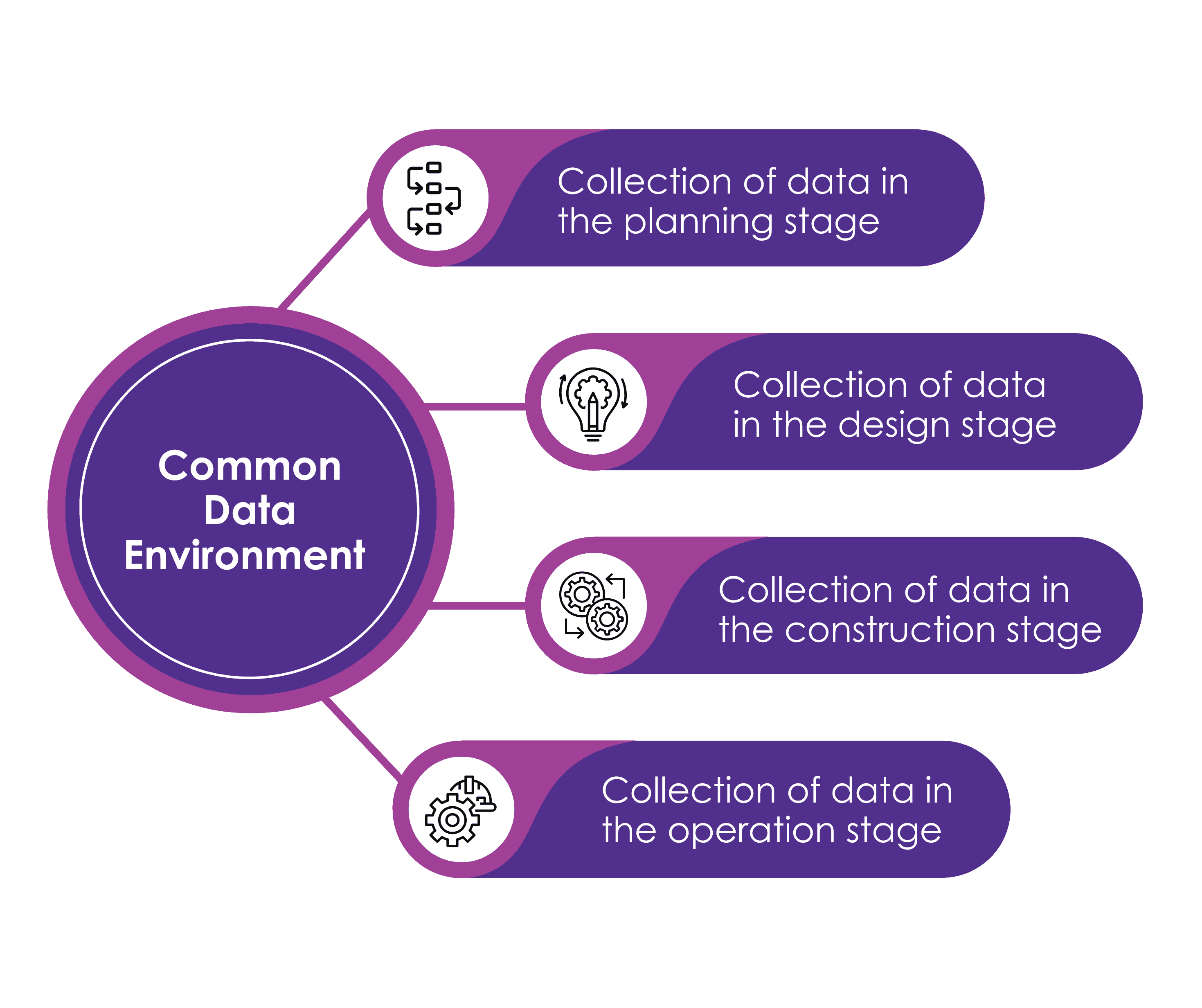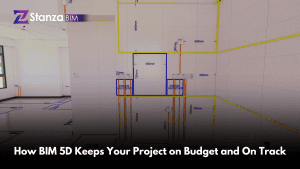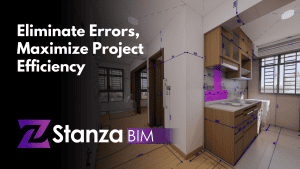Defining the concept of data and information in construction. Data can be used for a variety of purposes, such as:
- Collection of data in the planning stage – gathering and organizing information for decision-making purposes.
- Collection of data in the design stage – gathering and analyzing information to inform the creation of detailed plans and specifications for the project
- Collection of data in the construction stage – gathering and analyzing information to monitor progress, identify issues, and make decisions about the project’s execution.
- Collection of data in the operation stage – gathering and analyzing information to monitor and optimize the performance of the building or infrastructure system in its intended use.

However, the process of getting there requires the development of standardized data using technological innovations to solve the current problems in the built environment industry. By using a common data environment, your team can collect and manage data from all members of your team in a standardized way. This can help avoid data inconsistencies and cross factor issues that may arise from multiple data sources.
The Importance of Common Data Environment in Construction
Construction projects require a certain amount of time and resources relative to its complex scale . The bigger the project, the bigger the data it generates. That’s why it’s crucial to be able to manage the amount of data generated by the project, as well as the quality of that data. When using a common data environment, the provider of data can provide a standardized access to the data across all engineers, managers, and other staff members. This helps avoid data inconsistencies and cross-factor issues that may arise from multiple data sources. A CDE creates confidence and helps build trust among project participants and eliminates barriers to collaboration, increasing adoption, data sharing, and efficiency.
The Benefits of a Common Data Environment
Data has been a part of the built environment industry for many years. A common data environment can help maximize the benefits of data while streamlining the process of data collection and management. The common data environment enables project teams to collect and manage data in a standardized way. This can help avoid data inconsistencies and cross factor issues that may arise from multiple data sources. Data is critical to any project. Therefore, using a common data environment can help you collect data from all your stakeholders, making it more easily accessible and understandable. Because the data collected is standardized, It’s easy to match two sets of data that are consistent with each other and are part of the same project. This can help reduce variability in results and improve transparency as every data point is recorded truthfully.
Common Data Environment enables project teams to collect and manage data in a standardized and easily understandable way that is complete, standardized, and accurate. By standardizing the data collection process and ensuring every data point is recorded accurately, this can help reduce variations in results and increase transparency.










